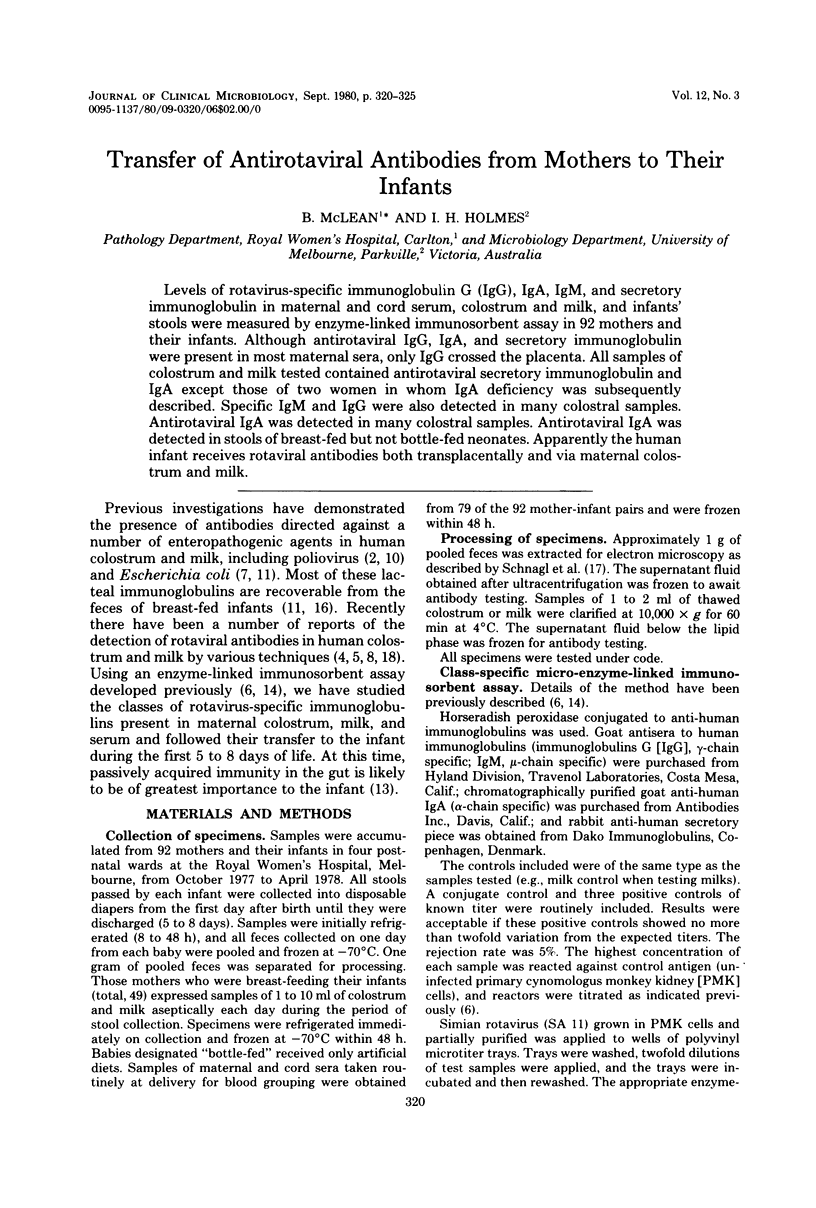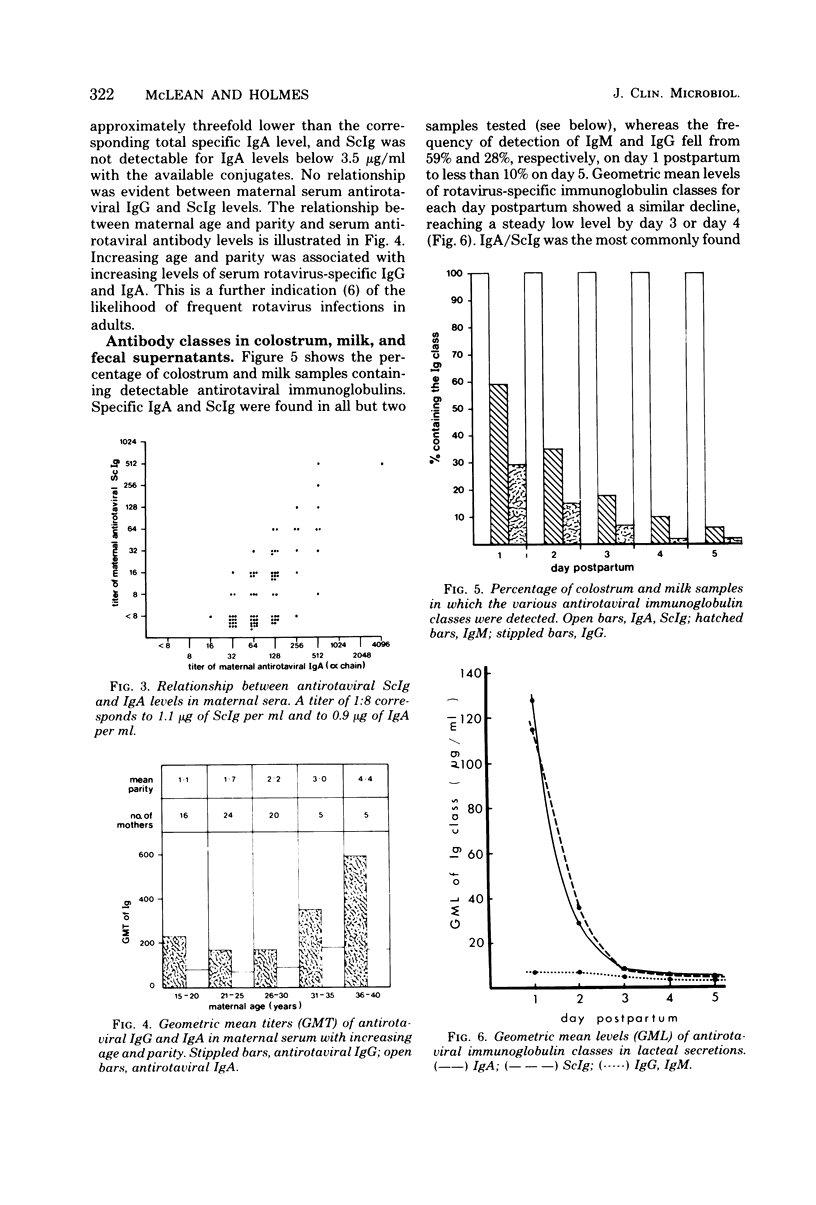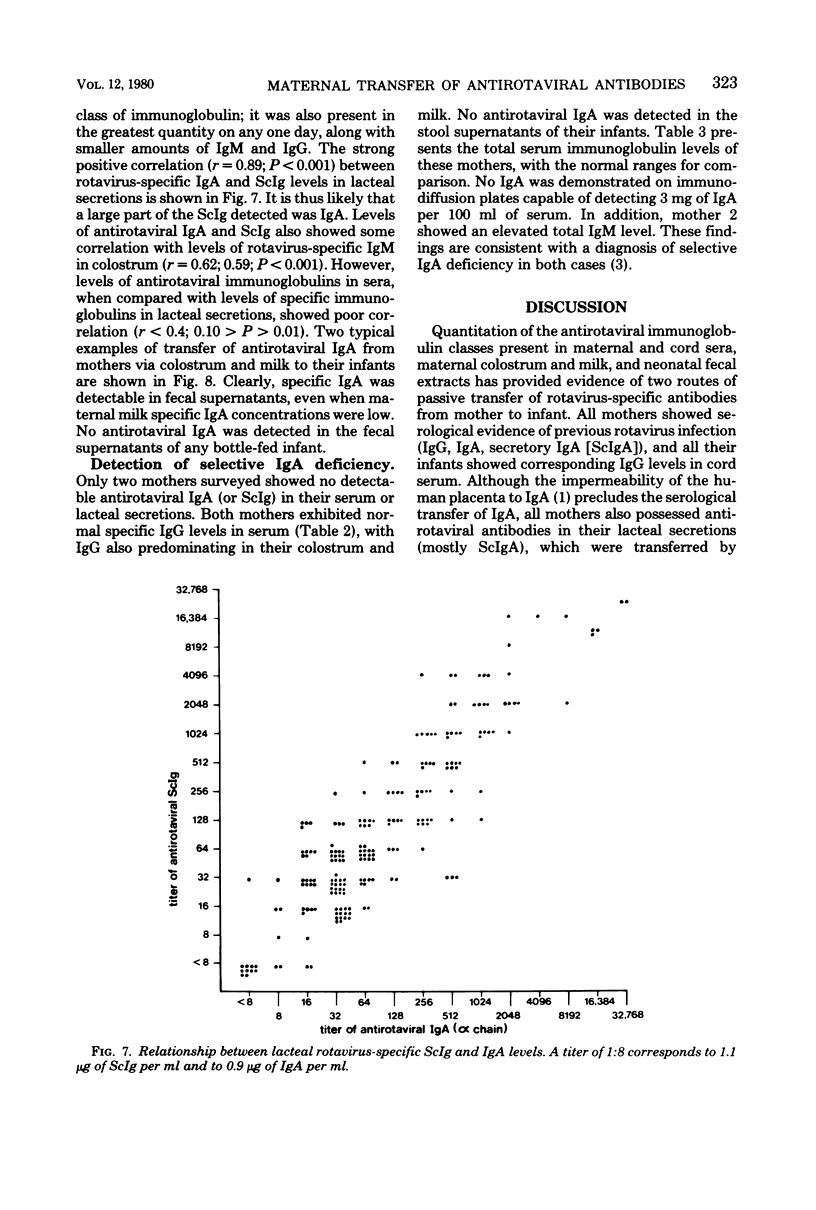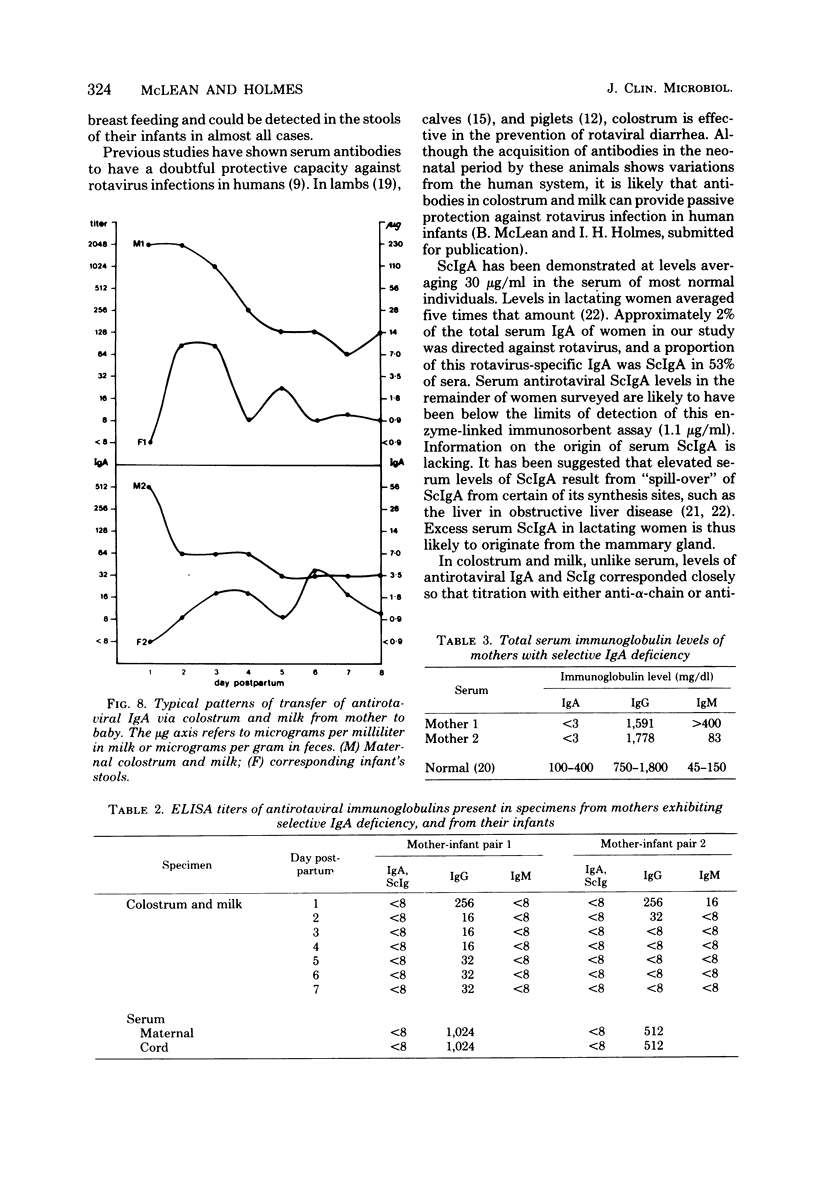Abstract
Levels of rotavirus-specific immunoglobulin G (IgG), IgA, IgM, and secretory immunoglobulin in maternal and cord serum, colostrum and milk, and infants' stools were measured by enzyme-linked immunosorbent assay in 92 mothers and their infants. Although antirotaviral IgG, IgA, and secretory immunoglobulin were present in most maternal sera, only IgG crossed the placenta. All samples of colostrum and milk tested contained antirotaviral secretory immunoglobulin and IgA except those of two women in whom IgA deficiency was subsequently described. Specific IgM and IgG were also detected in many colostral samples. Antirotaviral IgA was detected in many colostral samples. Antirotaviral IgA was detected in stools of breast-fed but not bottle-fed neonates. Apparently the human infant receives rotaviral antibodies both transplacentally and via maternal colostrum and milk.
Full text
PDF





Selected References
These references are in PubMed. This may not be the complete list of references from this article.
- Akao Y., Sasagawa A., Shiga S., Kono R. Comparative studies on the mode of neutralization reaction of poliovirus type 2 with serum IgG and secretory IgA from mother's milk and fecal extract. Jpn J Med Sci Biol. 1971 Jun;24(3):135–152. doi: 10.7883/yoken1952.24.135. [DOI] [PubMed] [Google Scholar]
- Cook D. A., Zbitnew A., Dempster G., Gerrard J. W. Detection of antibody to rotavirus by counterimmunoelectrophoresis in human serum, colostrum, and milk. J Pediatr. 1978 Dec;93(6):967–970. doi: 10.1016/s0022-3476(78)81221-9. [DOI] [PubMed] [Google Scholar]
- Cukor G., Blacklow N. R., Capozza F. E., Panjvani Z. F., Bednarek F. Persistence of antibodies to rotavirus in human milk. J Clin Microbiol. 1979 Jan;9(1):93–96. doi: 10.1128/jcm.9.1.93-96.1979. [DOI] [PMC free article] [PubMed] [Google Scholar]
- Ghose L. H., Schnagl R. D., Holmes I. H. Comparison of an enzyme-linked immunosorbent assay for quantitation of rotavirus antibodies with complement fixation in an epidemiological survey. J Clin Microbiol. 1978 Sep;8(3):268–276. doi: 10.1128/jcm.8.3.268-276.1978. [DOI] [PMC free article] [PubMed] [Google Scholar]
- Gindrat J. J., Gothefors L., Hanson L. A., Winberg J. Antibodies in human milk against E. coli of the serogroups most commonly found in neonatal infections. Acta Paediatr Scand. 1972 Sep;61(5):587–590. doi: 10.1111/j.1651-2227.1972.tb15950.x. [DOI] [PubMed] [Google Scholar]
- Kapikian A. Z., Kim H. W., Wyatt R. G., Cline W. L., Arrobio J. O., Brandt C. D., Rodriguez W. J., Sack D. A., Chanock R. M., Parrott R. H. Human reovirus-like agent as the major pathogen associated with "winter" gastroenteritis in hospitalized infants and young children. N Engl J Med. 1976 Apr 29;294(18):965–972. doi: 10.1056/NEJM197604292941801. [DOI] [PubMed] [Google Scholar]
- Katz M., Plotkin S. A. Oral polio immunization of the newborn infant; a possible method for overcoming interference by ingested antibodies. J Pediatr. 1968 Aug;73(2):267–270. doi: 10.1016/s0022-3476(68)80084-8. [DOI] [PubMed] [Google Scholar]
- Kenny J. F., Boesman M. I., Michaels R. H. Bacterial and viral coproantibodies in breast-fed infants. Pediatrics. 1967 Feb;39(2):202–213. [PubMed] [Google Scholar]
- Lecce J. G., King M. W., Mock R. Reovirus-like agent associated with fatal diarrhea in neonatal pigs. Infect Immun. 1976 Sep;14(3):816–825. doi: 10.1128/iai.14.3.816-825.1976. [DOI] [PMC free article] [PubMed] [Google Scholar]
- McLean B., Sonza S., Holmes I. H. Measurement of immunoglobulin A, G, and M class rotavirus antibodies in serum and mucosal secretions. J Clin Microbiol. 1980 Sep;12(3):314–319. doi: 10.1128/jcm.12.3.314-319.1980. [DOI] [PMC free article] [PubMed] [Google Scholar]
- Ogra S. S., Weintraub D., Ogra P. L. Immunologic aspects of human colostrum and milk. III. Fate and absorption of cellular and soluble components in the gastrointestinal tract of the newborn. J Immunol. 1977 Jul;119(1):245–248. [PubMed] [Google Scholar]
- Schnagl R. D., Holmes I. H., Mackay-Scollay E. M. A survey of rotavirus associated with gastroenteritis in Aboriginal children in Western Australia. Med J Aust. 1978 Mar 25;1(6):304–307. doi: 10.5694/j.1326-5377.1978.tb107863.x. [DOI] [PubMed] [Google Scholar]
- Simhon A., Mata L. Anti-rotavirus antibody in human colostrum. Lancet. 1978 Jan 7;1(8054):39–40. doi: 10.1016/s0140-6736(78)90382-3. [DOI] [PubMed] [Google Scholar]
- Snodgrass D. R., Wells P. W. Rotavirus infection in lambs: studies on passive protection. Arch Virol. 1976;52(3):201–205. doi: 10.1007/BF01348017. [DOI] [PubMed] [Google Scholar]
- Stiehm E. R., Fudenberg H. H. Serum levels of immune globulins in health and disease: a survey. Pediatrics. 1966 May;37(5):715–727. [PubMed] [Google Scholar]
- Waldman R. H., Mach J. P., Stella M. M., Rowe D. S. Secretory IgA in human serum. J Immunol. 1970 Jul;105(1):43–47. [PubMed] [Google Scholar]


